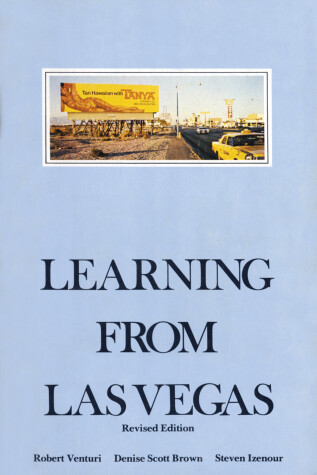The MIT Press
2 total works
Learning From Las Vegas
by Robert Venturi, Denise Scott Brown, and Steven Izenour
This revision includes the full texts of Part I of the original, on the Las Vegas strip, and Part II, "Ugly and Ordinary Architecture, or the Decorated Shed," a generalization from the findings of the first part on symbolism in architecture and the iconography of urban sprawl. (The final part of the first edition, on the architectural work of the firm Venturi and Rauch, is not included in the revision.) The new paperback edition has a smaller format, fewer pictures, and a considerably lower price than the original. There are an added preface by Scott Brown and a bibliography of writings by the members of Venturi and Rauch and about the firm's work.

